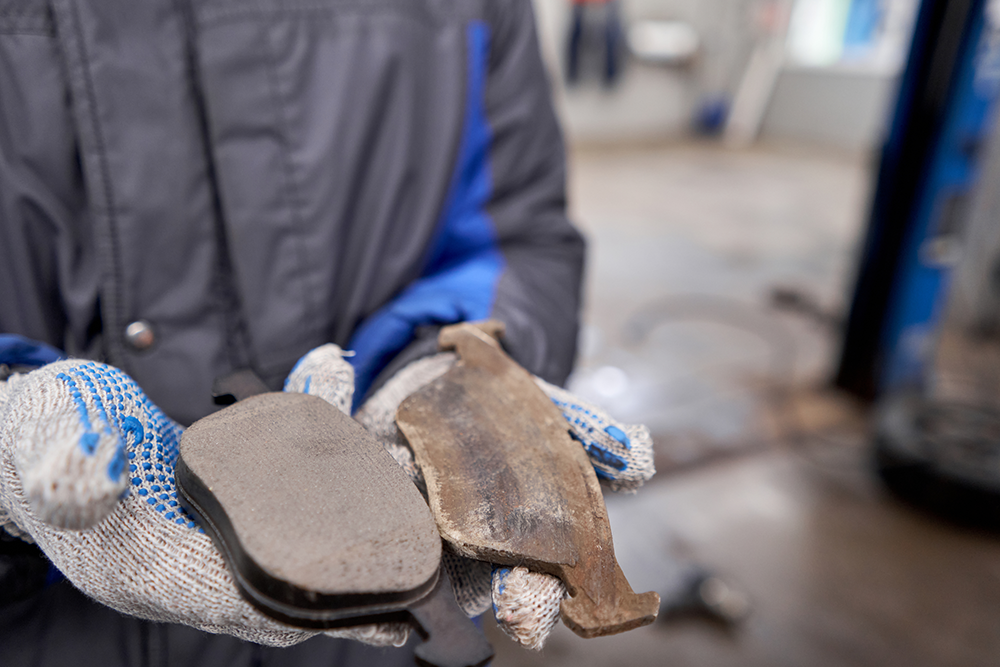Why Every Vehicle Needs A Mid-Season Brake Check

The holidays have become a memory but brake maintenance looms as a safety concern.
That is especially true for families who ventured on the road during the holidays as well as drivers planning a winter getaway.
“People have been sheltering in place and not driving as much as they previously had,” said Ryan Pietzsch, subject matter expert for driver safety education and training at National Safety Council. “But vehicles still require maintenance checkups and brakes need to be visually inspected.”
For Pietzsch the arrival of harsh winter weather in late January signaled the importance of preventative maintenance. Early identification of brake wear can prevent more expensive repair later.
Drivers are encountering subzero temperatures in the Midwest, thunderstorms in the South, freezing rain along the East Coast and tornadoes in Florida. Each of those climates can mean trouble for your vehicle’s brake system.
“Moisture from ice and snow can cause concern for brake systems,” Pietzsch said.
Like vehicles sitting in wet or humid climates, brake rotors corrode when they get wet and long term corrosion may cause pitting reducing their effectiveness. and possibly moisture in brake lines, Pietzsch said. The same is true for vehicles driven only a few times a week.
Owners may think they can put off brake inspection since they are driving fewer miles, Pietzsch said. Yet, the kind of stop-and-go driving for local errands leads to more brake wear than freeway driving--an unintended result of work-from-home trends during the COVID pandemic.
“Take a look at the vehicle owner’s manual,” Pietzsch said. “If you live in Florida the recommendations are different than if you reside in Michigan or Illinois."
Road crews in cold environments such as high elevations and northern states apply de-icing compounds on winter roads. Salt, sand and chemicals such as magnesium chloride corrode brake lines, brake rotors and brake drums.
Road grit may wedge between brake pads and brake rotors or wheel drums. These particles reduce brake pad contact and effectiveness.
“Road slop is the worst part,” Pietzsch said. “When you come back from a drive, I highly recommend cleaning off the undercarriage of your vehicle.
“In places like Michigan and Wisconsin it’s hard to rinse the undercarriage during winter months because it may not get above freezing. When the weather permits, make it a point to wash the underside of your vehicle as soon as possible.”
The National Safety Council and other expert sources offered the following advice for winter brake inspection and safe winter driving:
- A sitting vehicle may accumulate moisture and corrosion in the brake system. If your vehicle has been parked during COVID pandemic, get a brake inspection before your next outdoor adventure or road trip.
- Ask you service advisor to inspect worn pads, leaks in brake lines and damage to brake components.
- Do your brakes feel “spongy” when pressing the pedal? If so, there may be a leak or air may have seeped into the brake line. Get it inspected immediately.
- Moisture in the brake lines can cause brake systems to fail. The culprit may be corrosion, which requires a visual inspection.
- Do you hear grinding or scraping sounds when using the brakes? This is a serious problem and could lead to expensive repair or an accident if ignored. Do not drive the vehicle and have it inspected immediately.
- Make sure to use brake pads meet or exceed manufacturer recommendations. Ask your advisor what pads are recommended for your driving conditions and routine.
- Always test your brakes when you first get in your vehicle, especially if you have been driving on icy roads or the vehicle has been sitting outside in the snow “You might hear a ‘clunk’ or a ‘pop,” Pietzsch said. “That’s usually ice falling off the car.”
- Clean the undercarriage of your vehicle after driving in icy conditions. Road salts, sand and other road chemicals can damage brake systems.
- Use a coin-op car wash to remove most of the gunk and crud that can accumulate in the wheels and undercarriage of your vehicle.
- Learn about your vehicle’s ABS system. Check the vehicle’s manufacturer website and and your owner’s manual about how ABS works and what to expect when driving this winter.
- The ABS system kicks in during sudden stops when you press firmly on the pedal. Keep it pressed for the duration of the emergency stop--do not pulsate the brakes. A buzzing or scraping sound is not unusual and means the emergency system works.
- Keep proper distance with the vehicle in front of you even though you may have ABS brakes and all-wheel drive.
“Understand what ABS is for,” Pietzsch said. “Drivers may think it makes them stop faster, but that’s not true. It helps you maintain control of the vehicle. It does not give you better traction on icy roads.”